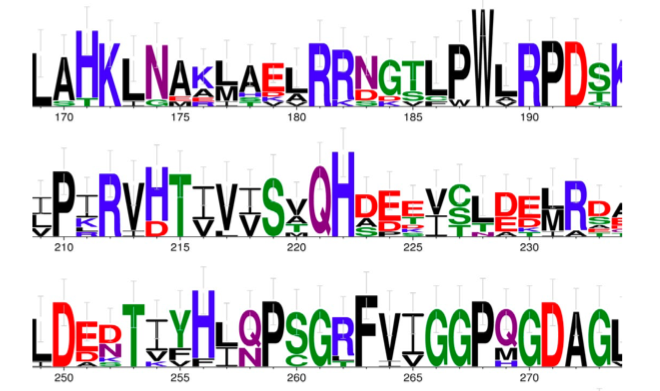9: Conservación de Proteínas
- Page ID
- 53892
Al término de este laboratorio, los alumnos deberán ser capaces de:
- identificar aminoácidos por su código de 1 letra.
- explicar las diferencias entre puntuaciones altas y bajas en la matriz BLOSUM 62.
- utilizar el algoritmo BLASTP para comparar secuencias de proteínas.
- identificar regiones conservadas en un alineamiento de múltiples secuencias.
A medida que las especies evolucionan, sus proteínas cambian. La velocidad a la que cambia una secuencia proteica individual varía ampliamente, reflejando las presiones evolutivas que experimentan los organismos y el papel fisiológico de la proteína. Nuestro objetivo este semestre es determinar si las proteínas involucradas en la biosíntesis de Met y Cys se han conservado funcionalmente entre S. pombe y S. cerevisiae, especies que están separadas por cerca de mil millones de años de evolución. En este laboratorio, buscará en bases de datos homólogos de secuencias de S. cerevisiae en varias especies, entre ellas S. pombe. Los homólogos son secuencias de ADN similares que descienden de un gen común. Cuando se encuentran homólogos en diferentes especies, se les denomina ortólogos.
Los homólogos dentro del mismo genoma se denominan parálogos. Los parálogos surgen por duplicación de genes, pero se diversifican con el tiempo y asumen distintas funciones. Aunque se produjo una duplicación del genoma completo durante la evolución de S. cerevisiae (Kellis et al. , 2004), solo unos pocos genes en la supervía de la metionina tienen parálogos. Curiosamente, MET17 es paralógo a tres genes involucrados en la transferencia de azufre: STR1 (CYS3), STR2 y STR4, reflejando múltiples duplicaciones de genes. La presencia de estas cuatro enzimas distintas confiere una flexibilidad inusual a S. cerevisiae en su uso de fuentes de azufre. Los genes SAM1 y SAM2 también son parálogos, pero sus secuencias han permanecido casi idénticas, proporcionando redundancia funcional si se inactiva un gen (Capítulo 6).

La función proteica está íntimamente relacionada con su estructura. Recordarás que la forma plegada final de una proteína está determinada por su secuencia primaria, la secuencia de aminoácidos. La funcionalidad de las proteínas cambia menos rápidamente durante la evolución cuando las sustituciones de aminoácidos son conservadoras. Las sustituciones conservadoras ocurren cuando el tamaño y la química de una nueva cadena lateral de aminoácidos es similar a la que está reemplazando. En este laboratorio, comenzaremos con una discusión sobre las cadenas laterales de aminoácidos. Luego utilizará el algoritmo BLASTP para identificar ortólogos en varios organismos modelo. Realizará una alineación de múltiples secuencias que distinguirá regiones que están más conservadas que otras.
A medida que trabajas en los ejercicios, notarás que las secuencias de proteínas en las bases de datos están escritas en el código de 1 letra. La familiaridad con el código de 1 letra es una habilidad esencial para los biólogos moleculares actuales.


